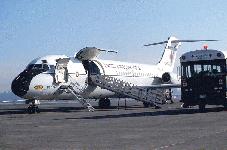
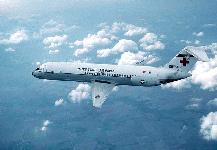
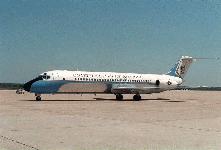
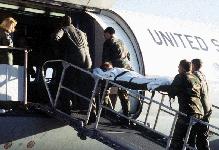
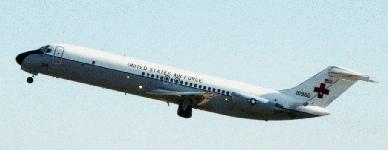



The C-9 is a twin-engine, T-tailed, medium-range, swept-wing jet aircraft used primarily for Air Mobility Command's aeromedical evacuation mission. The Nightingale is a modified version of the McDonnell Douglas Aircraft Corporation's DC-9. It is the only aircraft in the inventory specifically designed for the movement of litter and ambulatory patients.
The C-9A's airlift capability to carry 40 litter patients, 40 ambulatory and four litter patients, or various combinations thereof, provides the flexibility for Air Mobility Command's worldwide aeromedical evacuation role. A hydraulically operated folding ramp allows efficient loading and unloading of litter patients and special medical equipment.
The plane has:
The 375th Airlift Wing at Scott Air Force Base, Ill., operates C-9A Nightingales for Air Mobility Command. C-9A's are assigned to the 374th Airlift Wing at Yokota Air Base, Japan, for use in the Pacific theater. C-9s also are assigned to the 435th Airlift Wing at Rhein-Main Air Base, Germany, for use in the European and Middle East theaters. The C-9A Nightingale demonstrates its uniqueness and versatility daily by its ability to serve not only military, but Department of Veterans Affairs and civilian hospitals throughout the world, using military and commercial airfields.
The C-9 aircraft provides intra theater logistic support to Naval forces worldwide. The C-9 aircraft was procured as a commercial derivative aircraft certified under an FAA Type Certificate. Throughout its life, the aircraft have been operated and organically and commercially supported by the Navy using a combination of Navy and FAA processes, procedures and certifications. It continues to be maintained organically and commercially and relies on COTS/NDI components to support airworthiness. Aircraft modification efforts are turnkey projects (non-recurring engineering, procurement, installation, test and certification) implemented as part of competitively awarded maintenance contracts.Specifications | |
| Primary Function | Aeromedical evacuation |
| Contractor | McDonnell Douglas Corporation |
| Power Plant | Two Pratt & Whitney JT8D-9A turbofan engines |
| Thrust | 14,500 pounds (6,525 kilograms) each engine |
| Length | 119 feet, 3 inches (35.7 meters) |
| Wingspan | 93 feet, 3 inches (27.9 meters) |
| Height | 27 feet, 5 inches (8.2 meters) |
| Maximum Takeoff Weight | 108,000 pounds (48,600 kilograms) |
| Range | More than 2,000 miles (1,739 nautical miles) |
| Ceiling | 35,000 feet (10,606 meters) |
| Speed | 565 mph (Mach 0.86) at 25,000 feet (7583.3 meters), with maximum takeoff weight |
| Load | 40 litter patients or four litters and 40 ambulatory patients or other combinations |
| Crew | Eight (pilot, co-pilot, flight mechanic, two flight nurses and three aeromedical technicians) |
| Date Deployed | August 1968 |
| Unit Cost | $17 million |
| Inventory | Active force, 10; ANG, 0; Reserve, 0 |




